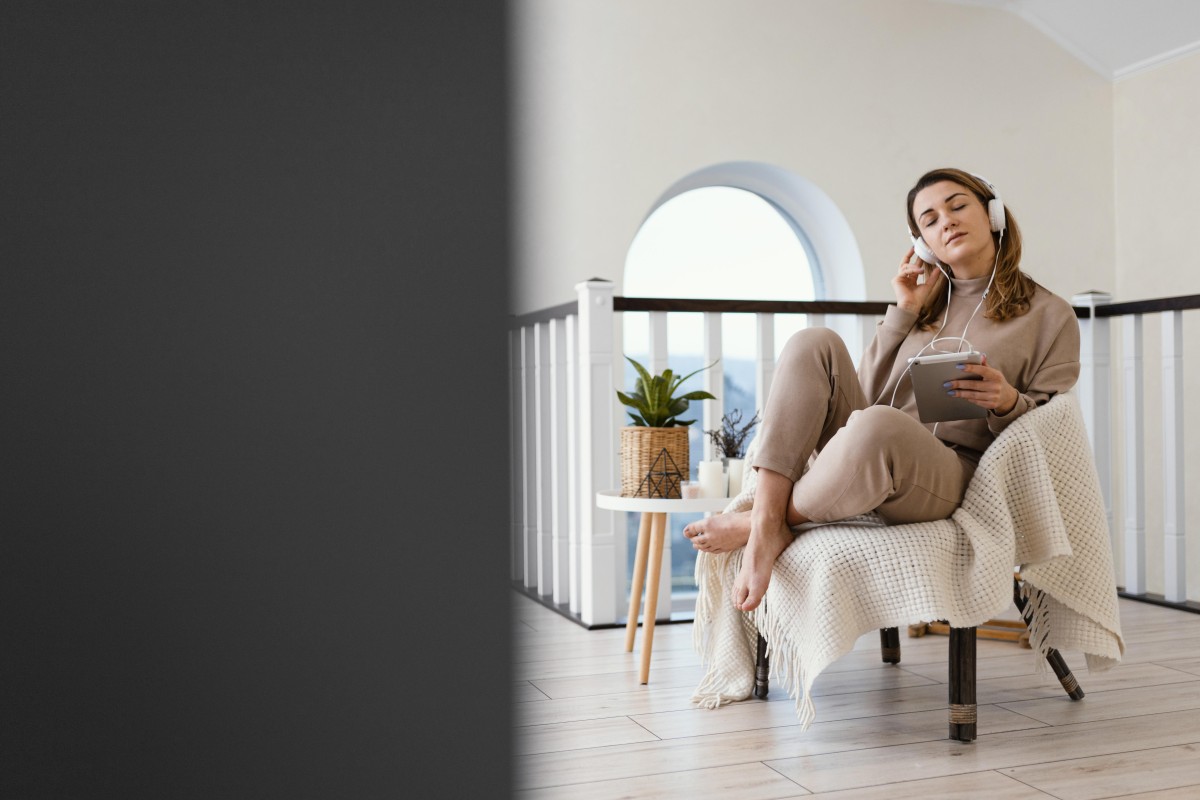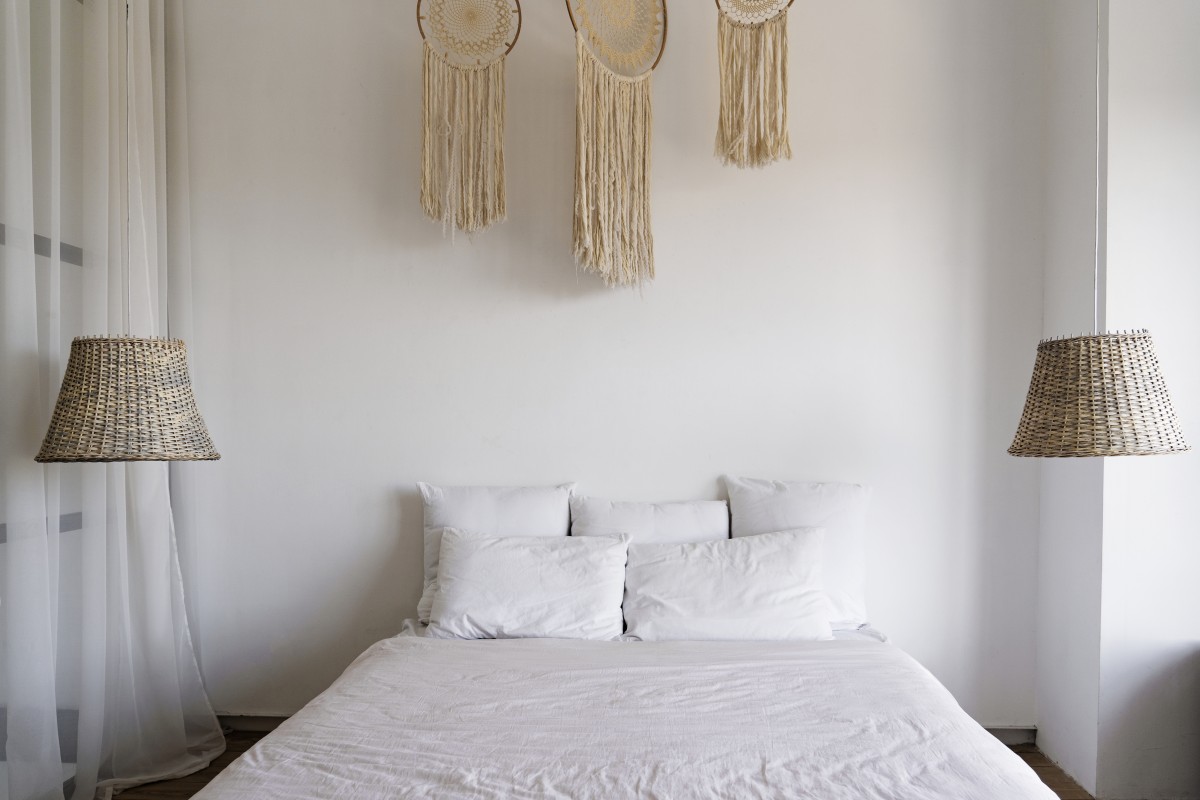
The term neurodivergence is increasingly entering everyday conversation, yet it is still often misunderstood or reduced to stereotypes. It describes people whose brains process, learn, or interact differently from what is considered “typical”.
Autism, ADHD (Attention Deficit Hyperactivity Disorder), dyslexia, high abilities, and Tourette syndrome all fall under this concept. While this topic was previously discussed mainly in therapy sessions or schools, it is now gaining prominence in a fundamental place: the home.
What should a home for a neurodivergent person be like? What matters most? Which elements can genuinely support well-being? Whether you are building, renovating, buying, selling, renting, or simply organising and decorating to live better, this guide is for you.
The central question is simple: how do we design spaces that help the brain rest, focus, and feel at ease?
Neurodivergence: what it is and why it matters for your home

Neurodivergent refers to people who have neurological, behavioural, communication, or learning differences that diverge from societal norms.
Neurodivergence reflects distinct ways of processing:
- Stimuli (sounds, lights, touch, smells)
- Attention and focus
- Task planning
- Communication and interpretation
Each brain perceives the environment in its own way, and these differences are not flaws, but natural variations of the human mind. Some of the best-known forms of neurodiversity include:
- ADHD
- Autism
- Tourette syndrome
- Bipolar disorder
These conditions can manifest through hyperactivity, distractibility, mood swings, difficulties in social interaction, or involuntary movements.
The home is, therefore, a sensory ecosystem. What feels “normal” for one person can be noise, glare, texture, or clutter that overwhelms another.
Thinking of a neuro-friendly home is, in reality, thinking of a better home for everyone: a space that reduces stress, simplifies routines, improves rest, and enhances productivity and happiness.
“Above all, the space must be adapted to the individual. Sensory and cognitive comfort vary greatly from person to person. At home, luxury is feeling the world slow down. When your space helps you live, your brain thanks you — and so do you,” explains psychologist Rita Gama Ferreira, an adult ADHD specialist.
The home as a sensory regulator

In a new build or renovation, the first step is to view the home as a sensory regulator. Acoustics, for example, have a direct impact on emotional regulation.
- Sound: High-quality doors, solid partitions, and well-insulated windows help maintain quiet and minimise unexpected stimuli.
- Light: Natural light should be balanced with blinds or curtains, and artificial lighting should be dimmable to avoid harsh glare.
Rita Gama Ferreira emphasises the importance of sensory and visual regulation:
“First, it is essential to understand the individual’s needs to identify what overstimulates or disorganises them. Generally, adjustable lighting — neither too bright nor cold — and careful attention to noise are key. Spaces should be calm, with sound-absorbing materials and simple visual organisation where each area has a defined purpose.”
Rita, also the author of Estou sempre a mil, highlights safety and predictability as fundamental pillars of comfort:
“Being cautious with candles or incense at bedtime is crucial, as it’s easy to forget and create unnecessary risks. Using transparent boxes in the fridge helps you see what’s inside and prevents food being overlooked. And having a box — or even a room — to stash items when guests arrive and the home is chaotic is also a good strategy.”

Other design considerations:
- Layout should prevent sensory overload. Simple circulation, smooth transitions between light and shadow, and well-defined refuge zones — such as a quiet corner with a comfortable chair and soft lighting — help the brain switch off.
- Smells matter too: low-emission paints, glues, and varnishes, combined with effective ventilation, are preferable to artificial scents.
A neuro-friendly home also benefits from visual and technological supports:
“Boards, checklists, and visible routines are always helpful. Setting up automatic payments, using trackers for keys or important objects, and creating visual reminders can simplify daily life.”
Ultimately, the home should adapt to the person, not the other way around.

Décor that regulates: more function, less visual noise
Décor is more than aesthetics — it is regulation. While trends may favour bold, stimulating styles, neurodivergent-friendly spaces aim to reduce cognitive load and increase predictability.
Content producer Patrícia Rebelo, diagnosed with ADHD, explains what makes a difference for her:
“Good natural light, complemented by soft artificial lighting.”
Practical strategies include:
- Use a coherent palette with a neutral base and minimal visible objects
- Ensure decorative items have meaning rather than merely filling space
- Soft throws, rugs, and curtains create comfort and a sense of containment
Rita Gama Ferreira adds:
“Simple organisation, clear labels, and clearly defined functional zones create predictability. Some people with ADHD prefer more stimulating or colourful environments — and that’s fine — but every choice should be intentional, not chaotic.”
Organisation and routine: giving the brain a map

Organisation is therapeutic in a neurodivergent home. Small strategies make daily life manageable:
- Label shelves and use colour-coding for categories
- Break large tasks into micro-steps (“put away dishes”, “wipe surfaces”, “take out the bin”)
- Keep baskets in each room for quick returns of misplaced items
- Duplicate frequently used items (scissors, brushes, chargers) to reduce searching
Patrícia Rebelo adds:
“I like areas with visible storage and a place to put things I don’t want to tidy immediately — like a basket.”
Rita Gama Ferreira recommends creating a “regulation corner” — a space to restore sensory and emotional energy:
“It could be a corner with soft lighting and pleasant textures for reading, drawing, listening to music, or any other activity of interest. It’s essential during moments of overload.”
Cleaning and maintenance: reducing friction
For many neurodivergent people, starting is the hardest part. Remove barriers by:
- Limiting cleaning to short, timed sessions
- Using lightweight, simple tools (upright vacuum cleaners, spray mops)
- Choosing low-scent, neutral cleaning products
- Using a visual maintenance calendar to distribute tasks over the month
Psychologist Joelle Santos, a neurodiversity specialist, explains:
“For many neurodivergent people, the challenge is not doing the task, but starting. The brain can freeze in the face of large tasks or chaotic environments. Reducing barriers and simplifying the first step transforms the impossible into a series of manageable actions.”
Delegating chores can also help maintain order without stress, for example through fortnightly or monthly support.
Room-by-room: adjusting the environment for brain rest

Adapting each room can create a sense of harmony that allows the brain to “switch off”:
- Entrance: Should be an anchor — sturdy coat racks, ventilated shoe storage, a bench to sit, and trays for keys and mail reduce arrival and departure chaos.
- Living room: Define zones for conversation, reading, and TV; use rugs to absorb sound and furniture to anchor the eye. Hide cables.
- Kitchen: Follow the functional triangle (fridge, counter, stove); transparent jars prevent waste and forgetting food. Matte surfaces and good ventilation reduce sensory discomfort.
- Bedroom: Prioritise rest with blackout curtains, soft bedding, minimal cables, calming wall colours, and unscented diffusers.
- Bathroom: Ensure gentle, non-glaring lighting; soft textures; discreet organisation; avoid strong scents or reflective chrome.
“The physical environment directly affects emotional regulation. A home designed to reduce stimuli and increase sensory comfort stops being merely a place to live — it becomes a space that nurtures, organises, and gives security to the mind,” concludes Joelle Santos.







